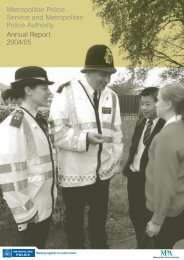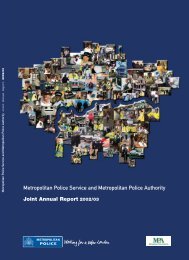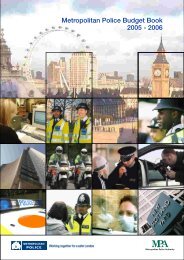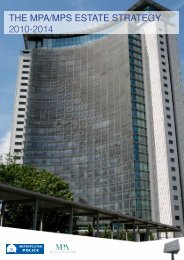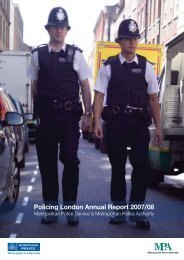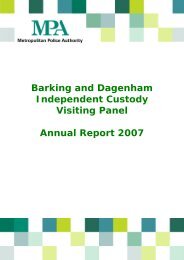14603 MPA AR p2716 REPAGIN.qxd
14603 MPA AR p2716 REPAGIN.qxd
14603 MPA AR p2716 REPAGIN.qxd
You also want an ePaper? Increase the reach of your titles
YUMPU automatically turns print PDFs into web optimized ePapers that Google loves.
22 AppendixPerformance Indicators and Priorities 2001/02IndicatorRoad Traffic Collisions2000/01PerformancePerformance Target for 2001/022001/02PerformanceBV132Number of road traffic collisionsinvolving death or serious injury0.76 per 1,000population0.74 killed or seriously injured per 1000population0.74 per 1000populationIndicatorPeople Strategy2000/01PerformancePerformance Target for 2001/022001/02PerformanceBV26Number of working days lostthrough sickness per police officer11 days per year9 days per year10.5 daysper yearBV26Number of working days lostthrough sickness per civilianemployee11.8 daysper yearNo target set. Specific sickness targets havebeen set individually for civil staff and trafficwardens11.4 daysper yearPPThe average number of days lostthrough sickness for civil staff(excluding traffic wardens)10.6 daysper year10 days per year10.8 daysper yearPPThe average number of dayssickness for traffic wardens21.4 daysper year20 days per year19.4 daysper yearBV29Number of medical retirements ofpolice officers as a percentage oftotal officer numbers0.8%BVPI was changed after target was set – nolonger applicable0.8%BV29Number of medical retirements ofcivilian employees as a percentageof total civilian employees1.0%BVPI was changed after target was set – nolonger applicable0.6%During the year there was an overall increase in sickness but thenature of sickness changed with a downward trend on long term andan increase in short term absenteeism. There is some disproportionalitybetween male and female sickness rates but some work is requiredin this area to identify the reasons. There continues to be a downwardtrend in the reduction in the number of officers on full, half, or offpay (Regulation 46).Initiatives to reduce sickness have included identification of ‘hotspots’and providing a more focused visit to those units to offer help andguidance, and promulgating good practice. This is in addition tothe work traditionally carried out by Occupation Health such asaccess to medical officers, physiotherapists, chiropractors andrehabilitation services.


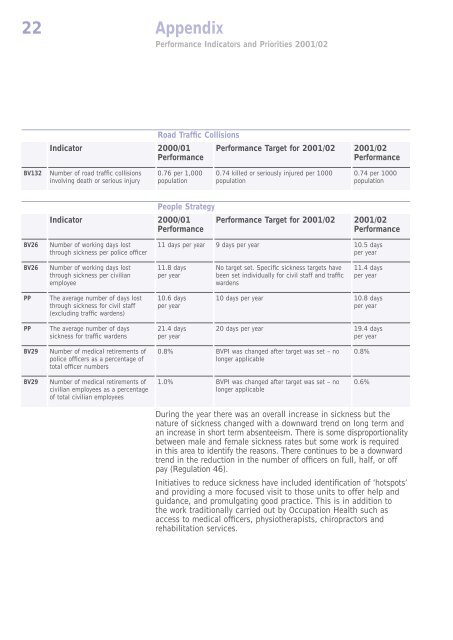


![Appendix 1 [PDF]](https://img.yumpu.com/51078997/1/184x260/appendix-1-pdf.jpg?quality=85)
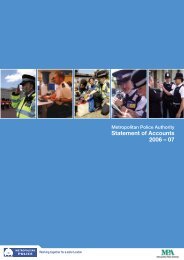
![Transcript of this meeting [PDF]](https://img.yumpu.com/50087310/1/184x260/transcript-of-this-meeting-pdf.jpg?quality=85)
![Street drinking in Hounslow [PDF]](https://img.yumpu.com/49411456/1/184x260/street-drinking-in-hounslow-pdf.jpg?quality=85)
